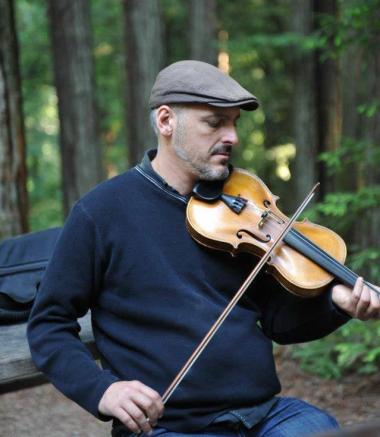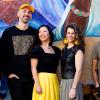
Seventeen years ago, Theatre Flamenco of San Francisco had a changing of the guard when its then-artistic director, Miguel Santos, turned the company over to Carola Zertuche. The concert that marked this event was in two parts; the first half, put together by Santos, was done in a more traditional flamenco style, and the second, by Zertuche, seemed to feature a completely new cast of dancers. Since then, Zertuche has explored her vision of what flamenco can be as the world changes around us — and as we grow and morph as well.
On May 10 at Dance Mission Theater, as part of the San Francisco International Arts Festival, Zertuche will premiere her latest work, Pasajes Flamencos. The whole show will be one hour and 15 minutes, “and everything starts and then merges into the next section,” explained the choreographer. She will be joined for the performance by five other dancers, two instrumentalists, and one singer.

Zertuche described aspects of the piece and how they came together. She said she is not traditional in her approach to flamenco, but “I love traditional [dance], and some of the steps I do are super traditional.” She also watches videos of great dancers like Carmen Amaya and encourages her students to do the same. “Because you have to know the roots and know the way we started. But then, we didn’t live in that epoch. We are here now, no?”
At the same time, Zertuche said, “I love the modern, but even in Spain, they try to be super contemporary. The way they are dancing is incredible, but they [have] lost the rhythm in the feet and also in the music. We [have] lost the essence. For me, you have to feel something, and you have to remember what you’re going after.
“This show is not going to have a story, but people will see different elements — the lighting, the stage, how the musicians move — because this is part of theater. When I do theater, I like to imagine it like a movie, and you create your movie.”

One of the musicians for Pasajes Flamencos is Haluk Kecelioglu, who will be playing both violin and oud (a Middle Eastern lute). Surprisingly, he has never worked in flamenco before. He described how this new endeavor is different from the music he typically plays. “The main difference is that I am used to having dancers follow the music,” Kecelioglu said. “In flamenco, it’s the other way around, and the musicians are following the dancers. It takes getting used to.”
Equally interesting is how Kecelioglu and guitarist Jesse Torres have worked together to develop the score, especially around issues like which keys they will use and how they will smoothly transition between them. They have had to consider what will work for singer Azriel el Moreno, who isn’t there for the first rehearsals.
And as with any collaboration, many decisions have come about through practical considerations. “One day we were rehearsing, and a percussionist I work with couldn’t make it” explained Zertuche. “And I don’t want to call just anybody. I had the rhythm, and the others were trying to convince me to do it, and they even brought me a cajón [a common flamenco percussion instrument]. I started and said no. Then I made this click, and I said, ‘I will play the castanets as percussion.’ So in the end, the music is amazing. … It’s funny how something totally accidental leads to something incredible.”
However, don’t leave it to chance to see this performance.




